
Evereve Turns Returns Into Opportunities With WeSupply
EVEREVE’s returns process took a 180-degree turn by using WeSupply’s Magento & Custom API integrations like Zendesk, Celerant, Veeqo
Boost customer experience and reduce support tickets
Realtime order and shipment tracking
Proactive order and shipping notifications
Predictive pre-purchase estimated delivery dates
Self-Serivce branded order tracking
Effortless experience delivered
Make returns profitable and delight customers
Flexibility to define any return destinations & conditions
Simplify returns for your customers and team
Incentivize exchanges over returns
Returns management made easy for your team
Understand why your customers are returning
Unify the online and the in-store experience
Hassle-free pickup experience for customers
In-Store Dashboard to keep operations streamlined
In-Store and Online orders unified
Drive foot-traffic to your stores
Boost customer experience and reduce support tickets
Realtime order and shipment tracking
Proactive order and shipping notifications
Predictive pre-purchase estimated delivery dates
Self-Serivce branded order tracking
Effortless experience delivered
Make returns profitable and delight customers
Flexibility to define any return destinations & conditions
Simplify returns for your customers and team
Incentivize exchanges over returns
Returns management made easy for your team
Understand why your customers are returning
Unify the online and the in-store experience
Hassle-free pickup experience for customers
In-Store Dashboard to keep operations streamlined
In-Store and Online orders unified
Drive foot-traffic to your stores
Find the answer to all your questions
Explore the most comon questions about WeSupply
Calculate the ROI that WeSupply can bring you
Request a no strings attached review of your current shopping experience and missed conversion opportunities
Take a step by step trip through our functionality to see how we can improve your ecommerce processes.
Read actionable articles on how to optimize your post-purchase experience and decrease support tickets
Get inspired by stories of how our customers implemented an effortless post-purchase experience
A Deep Dive into Top Companies' Order Tracking & Returns Strategy
Wondering if WeSupply is a good fit for you? Read through our use cases to see how we can help you increase conversion & improve CX!
Our expectations can get the better of us when we expect more than what is possible in a given situation, and then reality strikes.
See in this article what’s the truth behind your online returns expectations!

First of all, online purchases come with a new set of challenges, unlike in-store purchases that are straightforward— there’s no post-purchase anxiety due to the lack of order tracking information.
For online orders, when your customers are unaware of the whereabouts and statuses of their packages, they might proceed to cancel the order before the product even reaches their doorsteps. This can also be amplified by buyer’s remorse due to impulsive and opportunistic purchases.
Impulsive online shopping behavior often results in a significant number of returns. As a matter of fact, 30% of shoppers deliberately over-purchase and return unwanted products.

One step you can take in this direction is to offer order tracking. This way you’ll ease the post-purchase anxiety and get your customers excited about their orders— they’ll be less likely to cancel the order or return the product!
Secondly, some of the most common return reasons, particularly for the fashion retail industry, are reasons such as wrong size, different colors, or fabrics from what the customer had expected. These can be corrected by updating the product page, offering user-generated content and official product presentation photos and videos to help set expectations.
What makes returns management so challenging in the first place?
Among the reasons why managing returns can represent a challenge for a considerable number of retailers, we have:
Besides, consumer-friendly retailers feel the need to accept high volumes of returns although this can take a toll on their business. Not to mention how difficult it is to achieve reverse logistics process efficiencies.
Considering how challenging it can be to define ownership and establish roles and responsibilities across multiple teams, especially when you’re working with a variety of suppliers, store representatives, managers, etc. Some returns management platforms like WeSupply can help you assign different roles and permissions to simplify the process as much as possible.
But still, to make the most out of your returns, you need to collect relevant data from all departments. Only by analyzing and understanding these numbers, you can address the root causes of your returns and improve your returns management system. But why does this matter?
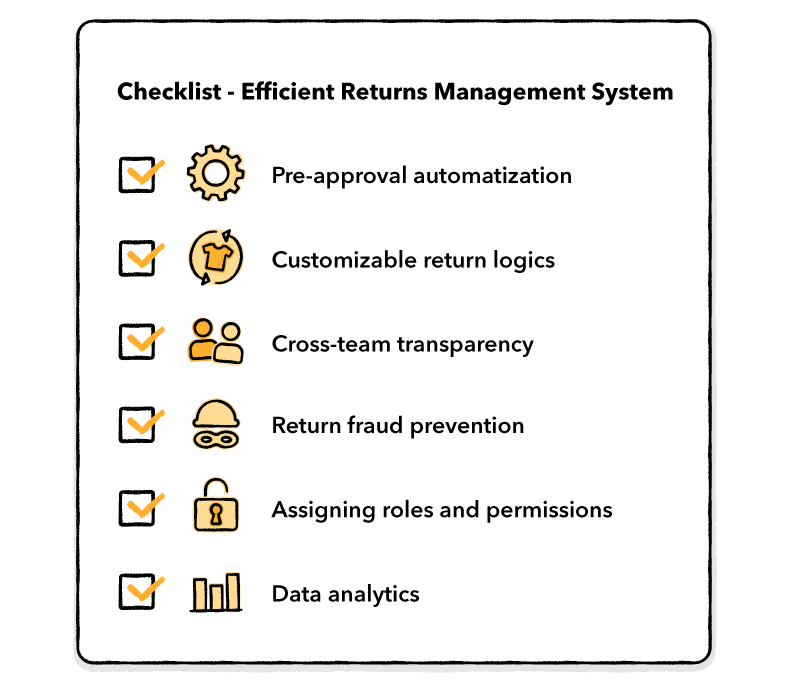
The pandemic put the retail industry under a lot of pressure— and we mean a lot.
Fortunately, a significant part of retailers has quickly adapted to the new circumstances imposed by the global crisis. These businesses, instead of shutting their doors close, came up with innovative solutions to nurture valuable customer relationships through online media and turning to digital tools.
If implemented correctly, returns management tools can create more selling opportunities, encourage exchanges, or build brand and customer loyalty.
However, things aren’t always what they seem. Your actions might not always lead to the desired outcome, and you often have no control over what the person on the other end is doing. The best you can do is to optimize your processes as well as you can, and we’re here with some tips and tricks to help you out!
Expectation: My customers will carefully read the return policy and understand every word of it. How wonderful is that!
Reality: Customers keep trying to return ineligible products because they didn’t even check out the return policy page.
Let’s take a look at some real-life scenarios that WeSupply helped solve:
What can you do in these situations?
First and foremost, make the return policy available at all times. Always nudge your website visitors and persuade them to take a look at it before proceeding with their purchases, and make sure you clearly discuss the terms, conditions, and fair use to make sure everything goes smoothly.
State whether or not some brands are excluded from the return policy if you allow returning customized items, products on sale, and if the discount value is over a certain percentage or value, etc. Make a clear distinction between return windows for each type of returned merchandise and let customers know if their online purchase is subject to different return rules.
If you feel like your return policy could use a little boost, you can turn to solutions like WeSupply’s Return Policy Enforcer that enable you to ask a simple yes/no question before automatically pre-approving or approving a return.
Need help creating your return policy? Check out our free Return Policy Generator!
Expectation: I’m going to collect all the data possible and improve all my processes along the way!
Reality: There are too many numbers, what do I do with them?
Data limitations hold retailers from understanding and addressing the root causes of their returns. However, you need to know exactly what metrics to look at and how to interpret the results you gather over time. Are you more interested in the refund rate? Are you looking for ways to increase your exchange rate? Do you understand why your customers keep returning your products?
Besides, having a clear overview of your returns can help with inventory management as well— reducing the number of backorders or excess inventory. As long as you know how much merchandise is going to be returned and when, you can use this type of information to better organize your production, inventory, and distribution and even cut down on shipping costs. This is why analytics and historic data on returns can help.
Assess your needs first, ask the right questions, and then look at the data!
Expectation: I’ll have a standard return policy for all items, regardless of category or supplier to make it easier for everyone!
Reality: Customers are demanding extended return periods during the peak holiday season, some suppliers only have 10-day return windows, whereas the rest have a 14-day return period.
Different products ask for different returns windows. The same goes for suppliers, seasons, brands, and the list goes on. Below are some specific cases you’re probably going to relate to:
To be more specific, think of all retailers who allow all commerce sales made during the holiday season, from November 1st until December 31st, to be returned until a specific date to meet consumer expectations.
If the returns window depends on the retail category, brand, supplier, or any other criteria, make sure your returns management platform allows you to set up custom return logics. This will save you from a lot of trouble and manual work!
Expectation: We can handle all return requests manually. This way we’ll also avoid fraud and abusive returns.
Reality: It takes way too much time, we need to automate our efforts and enable customers to initiate returns themselves.
Reverse logistics process efficiencies are difficult to achieve if there’s no centralized returns management system in place. Besides, if you’re processing all your return requests manually, you’re putting a strain on your staff. The time that could have been spent more productively goes to waste on repetitive tasks that could’ve been automated.
It’s also more convenient for the customer as well! Think about it: would you rather be on calls and email the support team for days in a row, or simply initiate a return using an online platform?
The answer is a no-brainer. That’s why operational & post-purchase platforms like WeSupply enable customers to request a return in a few simple steps. On your end, you only have to authorize returns that require thorough inspection— everything else is pre-approved!
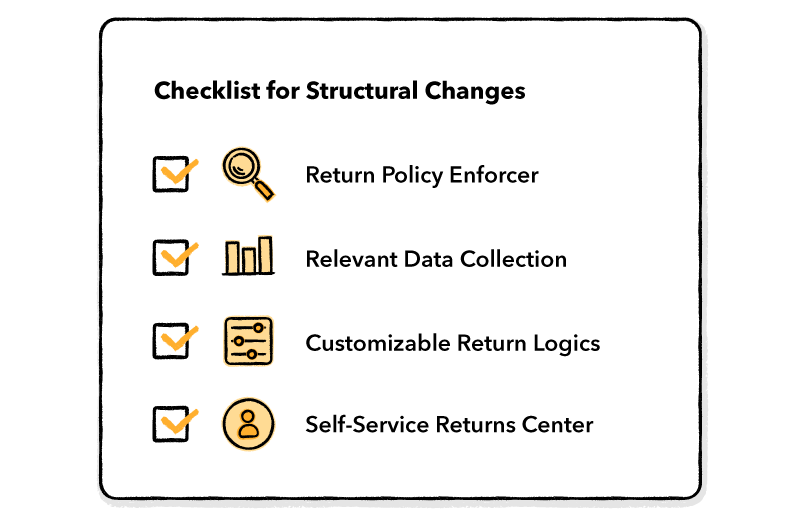
Customer returns can be a retailer’s worst nightmare.
Short story long: Customer returns are an unavoidable part of the retail industry. As an eCommerce business owner, offering return helps you increase customer satisfaction, build trust-based relationships and drive more repeat purchases long-term.
In all seriousness, when a customer proceeds with a return request, it’s important that you inspect it thoroughly and determine whether or not their return meets the criteria for an approved refund, exchange, etc., and that takes time and energy.
On the bright side, if handled correctly, returns can also create more selling opportunities for your business, adding to the customer lifetime value.

No doubt, returns are the necessary evil in retail. It keeps customers happy and helps commerce businesses nurture trust-based relationships.
An easy return process also means increased customer satisfaction. A customer might love a brand and simply not love a certain product. If the return experience is favorable, they will most likely continue to buy from the same retailer.
However, a single bad encounter can negatively impact customer loyalty.
In fact, 33% of Americans say they’ll consider switching to another brand after just one bad customer service encounter.
Considering the above and the fact that retail returns jumped to an average of 16.6% in 2021 versus 10.6% the previous year, according to a survey by the National Retail Federation and Appriss Retail (source), things aren’t looking so bright in 2022 either.
So what is the return rate for your omnichannel or eCommerce business? Keep reading to find out!
Whether you like math or not, calculating the costs and rates of your returns, refunds, exchanges, etc., is a must in order to properly assess your returns management needs and improve the returns process in the long run.
Since we’re here to make things easier for you, below are some useful formulas to help you calculate your return, exchange, and refund rates, and return fraud costs.
Calculating the return rate for your business is no rocket science. All you need to measure is the number of items approved for return within a certain period versus the total number sold in the exact same timeframe.
Assuming you sold 10,000 units in a month and had 1,000 of them returned, your return rate would look something like this:
1,000 / 10,000 x 100 = 10%
Keep in mind that the return rate is not the most reliable metric if you want to improve your products and services since it cannot answer questions like why your customers keep returning your items.
One of the best scenarios for retailers when it comes to returns is turning refund intro exchanges. In terms of costs and revenue, rather than having to resell a returned item and reimburse your customer the price, it’s better to let them have an exchange product and resell the one that’s being returned.
You can calculate the exchange rate by dividing the number of exchanges by the total number of returns. Continuing with the example above, for 1,000 returned units and 400 exchanges, the exchange rate would be:
400 / 1,000 x 100 = 40%
What matters the most is to collect sufficient return reasons and figure out ways to transform your refunds into exchanges. Alternatively, you could also offer online store credit instead of reimbursing the sum to the original payment method— this can save you time and increase the number of future sales.
Last but surely not least, what is the refund rate?
The return rate refers to the total number of refunds versus the total number of returns.
For 1,000 returned units, 400 exchanges, and 500 refunds, the refund rate would be:
500 / 1,000 x 100 = 50%
As mentioned previously, by issuing online store credit coupons instead of reimbursing the sum to the customer’s bank account, you can save precious resources drive more future sales. In this specific example, let’s assume that out of the approved returns, the remaining 10% are compensated through online store credit.
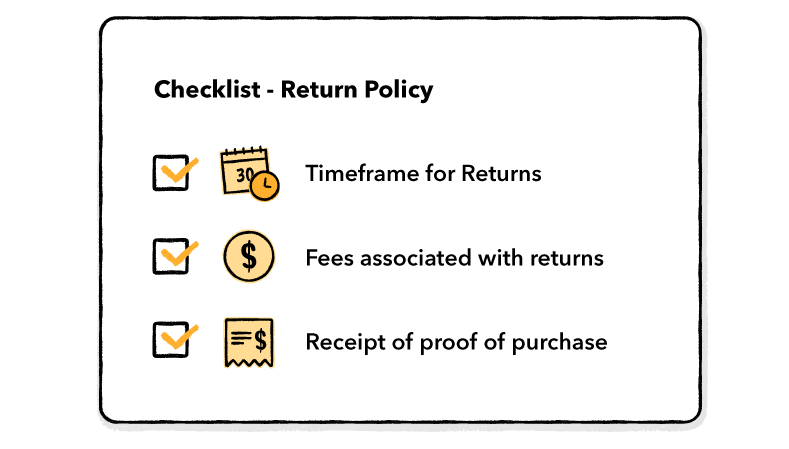
Considering that a return costs on average 30% of the purchase price, let’s assume that it costs you $30 to process the return of a $100 product.
For the all returns you approve each month, about 5% are fraudulent ones. In this case, that means about 50 fraudulent returns, amounting to approximately $1,500.

These numbers are something to worry about, especially if your return rate is much higher. Return abuse and fraud can cost retailers more than they can afford. Fortunately, there are plenty of surefire ways to prevent and combat return fraud, and we’ve discussed some of them here!
Meeting the expectations of your customers is challenging in real life, and that’s a fact. But you don’t have to go through so much trouble if you have a reliable returns management tool and the right processes (and people) in place.
Learn how automated returns
work in WeSupply!
Want to learn more about retail return trends in 2023?
Download the full report to get exclusive insights from WeSupply!

EVEREVE’s returns process took a 180-degree turn by using WeSupply’s Magento & Custom API integrations like Zendesk, Celerant, Veeqo

With WeSupply Paravel reduced time and complexity by integrating all systems into one, rather than hundreds of integrations with many platforms and carriers.

Learn more about return fraud signs to watch out for and best practices to help you avoid fraudulent returns altogether.
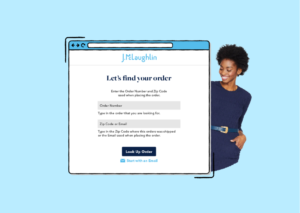
WeSupply was able to develop a native integration with Aptos, a huge omnichannel retail management software, that allows JML’s customers to track their packages and make returns in an automated and branded interface.

Managing returns has never been easier! Check out the returns management best practices in this article to learn how to simplify the process.
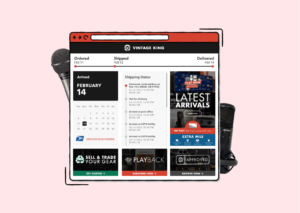
For nearly three decades, Vintage King personnel has been committed to equipping customers with the very best audio equipment, advice, and personal services across the globe.

What is return abuse and how can you handle it? Read this article to find out what are some tell-tale signs and how to steer clear of them.

Check out this list with the top 7 returns management software for eCommerce businesses and decide which one fits your needs the best.

WeSupply developed a custom solution (now fully available for everyone) that detects the originating warehouse for each product automatically and, when a return is created for multiple products, and it generates multiple labels based on each product’s return warehouse.